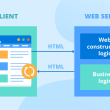When you see an orchestra playing, your eyes are focused on the musicians picking violin strings and blowing trumpets. But there is a guy in the corner, who elegantly hits a tiny metal triangle from time to time. He is definitely not the most important member of the orchestra, you might think.
But here’s where you’re wrong. Although the triangle may seem like a minor instrument compared to others in the orchestra, it is an important part of the overall ensemble because it adds key accents to a melody and creates a sense of excitement that makes music so catchy to listen to.
A product discovery team in a software development project is just like the triangle guy in a symphony orchestra. You may think that a product discovery team is unimportant, but in fact it plays a significant role in setting a direction for your product development or even saving it from a failure.
A real sound contribution a product discovery team makes
A product discovery team are the main musicians in your project orchestra as they make your product a sound solution. Without their job being done, your product will have no direction, and you’ll fire canons of money at a software that doesn’t have even a roughly defined purpose.
You can avoid such a disaster by hiring a product discovery team that will work on three major areas: product validation, project planning, and risk mitigation. Let’s review these areas under the microscope.
Product validation
You may come up with an innovative concept for your product, but before splashing out tons of money on its development, you have to ensure that your app isn’t a bunch of bells and whistles but a solution to a real user problem. Developing a minimum viable product (MVP) is the most common way of validating an idea for a startup, but with a product discovery team you won’t have to engage in any development process.
Business analysts usually have enough expertise to judge whether your product idea is feasible. If it’s not, a product discovery team can help you adjust your product idea towards a realistic vision. In such a way, you ensure that you are going to build a product that is feasible to develop and meet your target audience’s expectations better.
Project planning
Your software development project must follow a plan. Without clear goals, your project will never end, and your entire business is very likely to .
That is why you need a product discovery team that will work on requirements to your solution, create time and budget estimates, and write a detailed product roadmap. This information will guide your software development team, so that you’ll be able to release your solution on time and within the budget.
Thanks to the work of our business analyst and project manager, the client got a detailed software requirements specification (SRS), product development roadmap, and a project plan with clearly defined milestones.
Gantt chart as an example of a project plan
On top of that, the system analysis enabled us to identify potential bottlenecks in the product’s performance and security. By having even the worst-case scenarios planned, our project manager made accurate time and cost estimates that ensured timely delivery of the product without budget overruns.
As a result, the startup managed to bring the product to market on time despite the hurdles caused by the COVID-19 pandemic. The startup released an effectively performing and scalable product that has rapidly gained more than 40, 000 users. Our cooperation with the client is ongoing as the company plans to keep its product growing.
Risks mitigation
Aside from defining the requirements to your product and planning its development, a product discovery team can help you mitigate risks and save your business from failure.
For instance, Airbnb was struggling to attract users, but a poor user interface/user experience (UI/UX) design of the product’s web version put the entire startup at a risk of failure. Luckily enough, a product discovery team came into play and strummed the strings of the UX watch.
The product discovery team at Airbnb was responsible for identifying areas of the platform that needed improvement and developing new features to enhance the user experience. To improve the user-friendliness of the site, the team focused on the key elements of product discovery:
- User Research. The team conducted extensive user research to understand how people were using the site and identify pain points in the user journey. They used a variety of research methods, including surveys, customer interviews, and usability testing, to gather user feedback.
- Data Analysis. The team analyzed data from user behavior on the site to identify areas of high drop-off rates or low engagement. This data helped the team identify where users were struggling or getting frustrated with the platform.
- Prototyping. The team developed prototypes of new features or improvements to existing features and tested them to gather customer feedback and iterate on the design.
- Cross-functional collaboration. The product discovery team worked closely with other teams, such as design, engineering, and customer support, to ensure that any changes or new features were implemented seamlessly and didn’t cause any technical issues or confusion for users.
Airbnb’s product discovery team simplified the search process and reduced the number of steps required for booking an apartment at the website. Had the startup ignored the assistance of a product discovery team, it is quite possible that we would have booked apartments with some other service.
To turn a complex system into a user-friendly product, our product discovery team did the following:
- Writing software requirements specification. A detailed SRS helped our team understand what to start with and what user flows should be isolated from each other to avoid confusions.
- Mapping user journeys. Our business analyst created a user journey map to come up with the idea of a plain user onboarding.
- Analyzing user personas. To create a user-friendly design, our team needed to know who would use the application. We created user personas to analyze the behaviors and preferences of the app’s target users to understand how to visualize complicated energy use information in a plain and comprehensive fashion.
- Brainstorming ideas for UI/UX design. The product had to demonstrate all key data and relatable processes on a dashboard. A lot of sophisticated information on one screen naturally confuses a user, which is why our UI/UX designer had to brainstorm several different ideas on how to make a dashboard informative enough yet easy to understand without feeling overloaded.
Behind the scenes of a product discovery rocked team
Splendid, we’ve learned that a product discovery team is a band, without which your product orchestra won’t sound like a success. But who is in the band and what instruments do they play?
If you hire a product discovery team, for example, you’ll definitely work with the following talents:
- Business analyst/project manager. A business analyst role in product discovery is of utmost importance. They are a front singer of your product discovery band as they use such product discovery techniques as writing SRS, researching the market, developing user stories, and communicating with you a lot. Overall, a business analyst/project manager is the main person you will interact with to run a product discovery process for your solution.
- Development tech lead. It is a drummer who sets the beat, tempo, and rhythm of the project. Software development tech lead provides you with time estimates and makes their comments to the technical part of the software specification.When any of our software engineers approaches your product, they always bear in mind your business goals.
- Development and operations (DevOps) engineer. That’s the band’s bass guitar. The DevOps engineer offers different architectures of your solution and structures deployment of releases. Sometimes, a DevOps engineer may consult a quality assurance team to learn whether the product’s regression testing has any nuances they need to know. Without insights coming from a DevOps professional, your product roadmap won’t be informative enough, which is why we always have this guy in our product discovery teams.






